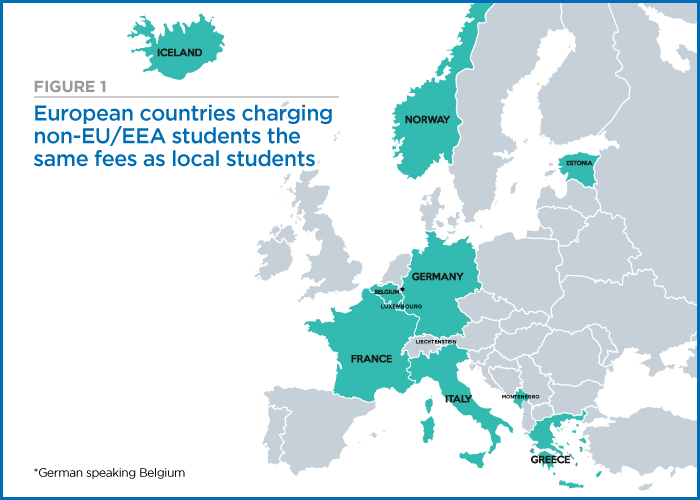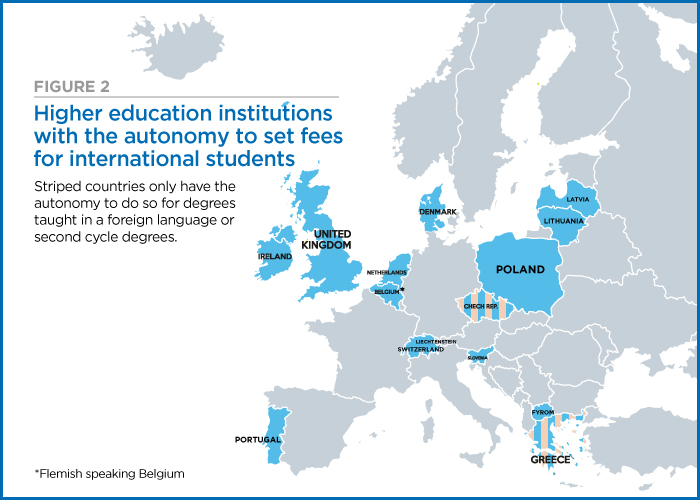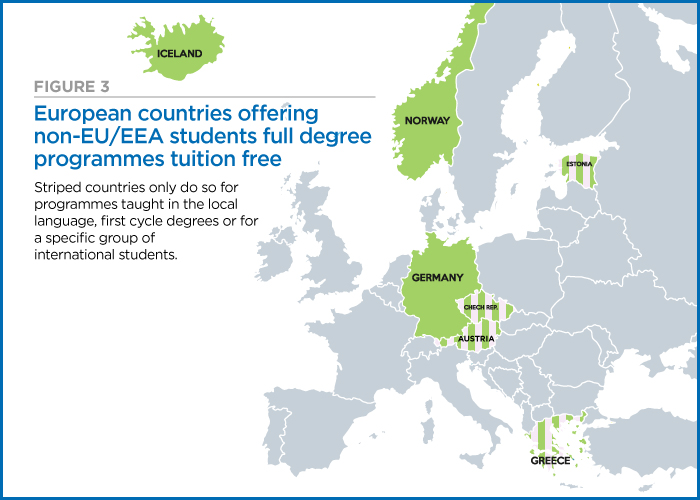Mapping international student fees in Europe

Tuition fees for international students are a much debated topic. The rationale for introducing fees, different fee-structures and the consequences they have are both value-laden and concrete economic questions. The fee policies and structures are constantly evolving in Europe and, as an international officer, having a good overview of who charges international students what is essential. Last year, Eurydice published a comprehensive report containing facts and figures on tuition fees in Europe.[i] This blog post gives you a quick overview of the main findings.
More and more European countries have changed from a homogenous fee structure to one that distinguishes between international and local students. Most countries in Europe now charge international (non-EU/EEA) students higher fees than local students. In 11 European countries, international students pay the same fees as local students; in the Czech Republic this only applies to programmes in Czech. In five Central and Eastern European countries (the Czech Republic, Estonia, Latvia, Lithuania and Slovakia), both local and international students are charged for programmes offered in a foreign language.

The power in setting fees
It is most common for higher education institutions to charge international students within a policy framework set by the national government – either the same or different from the framework applied to local students. This is usually in the form of overall tuition fee ranges, or ranges per field or level of study. In Bulgaria, for example, the government sets the tuition fee range per field of study and higher education institutions have the autonomy to set the fee within it whereas in Romania and Finland the government has introduced a minimum fee for all programmes. In 18 higher education systems, higher education institutions have autonomy to set the fees for international students. This is the case in countries such as the Netherlands, all UK higher education systems, and Poland. In the Czech Republic this only applies to programmes taught in a foreign language and in Greece to second cycle degrees.

Tuition-free degree programmes
Tuition fees for international students are charged by almost all education systems. A handful of countries still offer tuition-free full time degree programmes (administrative costs may be charged), however. These countries are the Czech Republic (only programmes taught in the Czech language are free of charge), Germany, Estonia (only students attending programmes taught in Estonian and progressing at the expected pace are guaranteed tuition free studies), Greece (only applies to first cycle studies), Iceland, and Norway. In Austria, international students from developing countries may be relieved from paying tuition fees.

In the majority of European countries, international students are charged higher fees than local (EU/EEA) students, yet a significant number of countries charge the same fees from the two student groups. The power of higher education institutions in determining fees for international students differs from one higher education system to another. Most act within a framework established by the government with varying degrees of flexibility in setting the fee while others have complete freedom in determining fees for international students. Offering full degree programmes tuition free to international students is rare in Europe today.
Anna-Malin is Policy Officer at the EAIE.
Note
[i] The report covers 42 European higher education systems, namely the EU-28 and EFTA/EEA and candidate countries.






